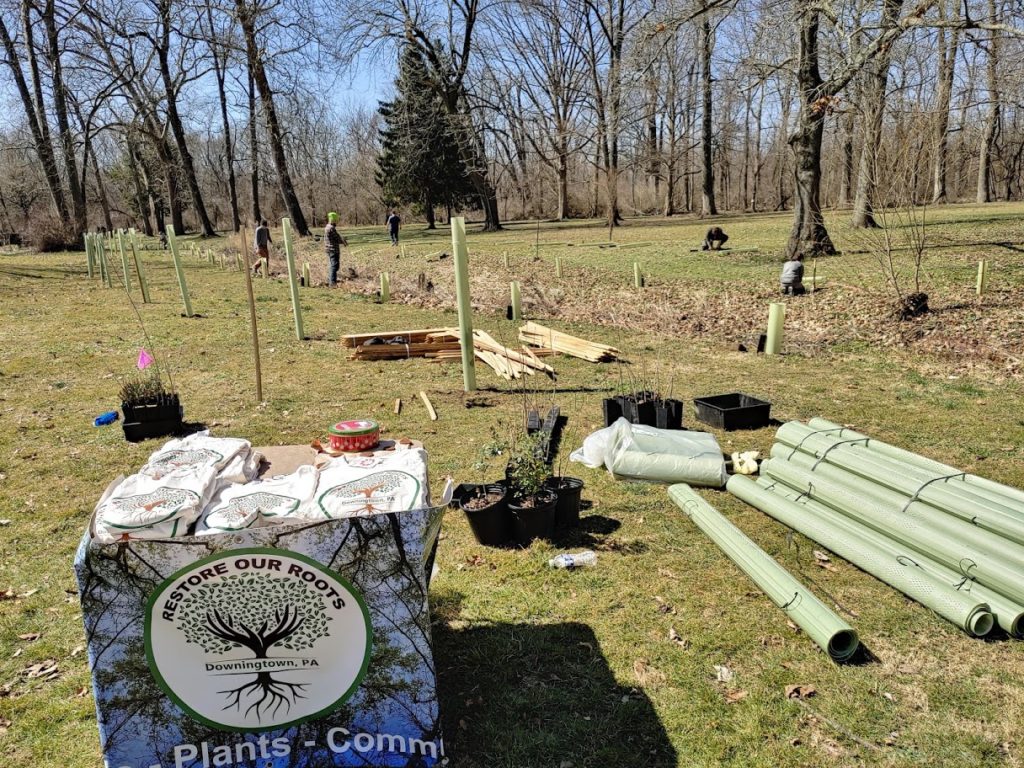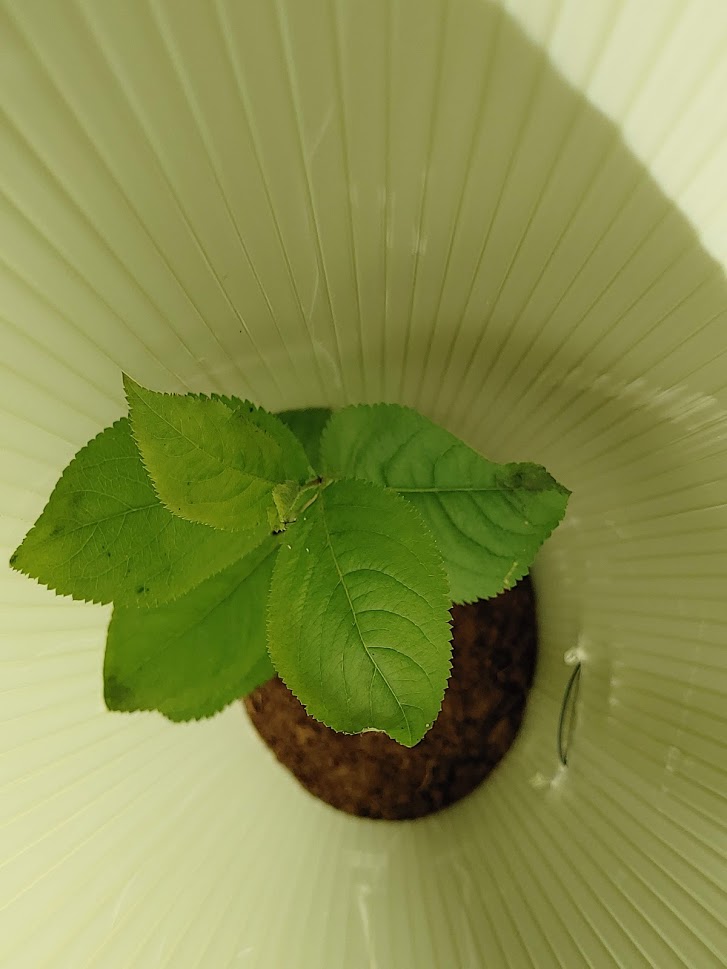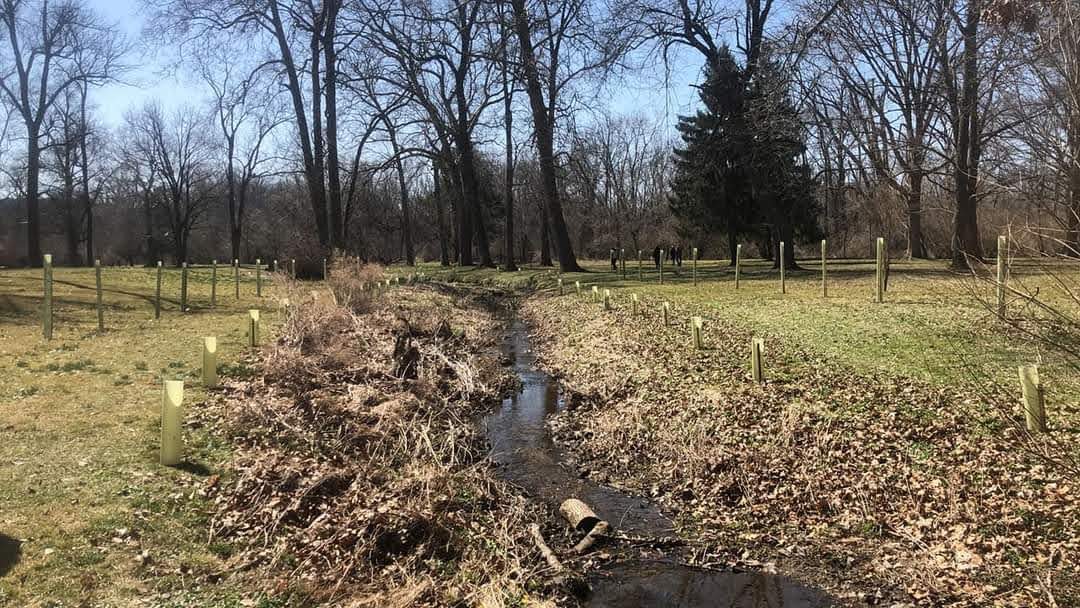Can you imagine a better way of celebrating the first day of Spring? We sure can’t!! Members of Restore Our Roots and volunteers came out to plant native trees and shrubs along the stream in Kerr Park. This was our phase 3 and 4 planting, that stretches between the yellow bridge and the stone bridge. This is a continuation from our Spring planting last year, with the goal to continue down the stream until it meets the Brandywine River.
For this planting, we introduced some new native species to the mix, including elderberry, eastern redbud, basswood, eastern red cedar, spicebush, and black willow. In total, we ended up planting 80 native trees and shrubs. These species will provide a lot of benefits to our community and ecosystem.
We have seen a lot of bad floods this past year in Kerr Park, and these trees and shrubs are water-loving species and will help prevent erosion, filter out pollutants, contribute to healthy soil, and help absorb the water. Black willow and spicebush are water-loving plants that will grow in partial shade or full sun as long as there is enough moisture in the soil. Their canopies will shade the stream and regulate the temperature of the water which improves the dissolved oxygen and will help to prevent algae growth and unwanted species. The trees that grow along streams and rivers provide a lot of needed habitat for birds, rabbits, and other wildlife.
The pollinators are needed for us to enjoy the benefits of these species. Spicebush is a dioecious shrub meaning they are either male or female. To be successful to plant spicebush to assist in the riparian buffer we need to plant at least one male, which can support up to five female plants. Without pollinators, we would not be able to enjoy the berries of the spicebush which is often used for baking. Elderberry flowers are white and have a large supply of nectar for bees. When these flowers are pollinated they turn into sugary, edible berries for both wildlife and people once it’s cooked. The flowering species that we planted such as the eastern redbud also provides beautiful pink flowers in the spring providing the first big supply of nectar.
Besides the amazing aroma it gives off, the spicebush is a common edible plant where all parts of the plant can be used. Many teas are made out of the leaves and the bark, and the ripened berries in fall give an allspice taste that can be used in pies and baking recipes. Elderberry is often used to make syrups, and beverages. As these plants grow, be on the lookout for recipes from our ROR members and volunteers.
All in all, the day was a huge success! We had 5 volunteers help us plant and many members of our community stop by to ask questions and show their support. We want to give a huge thank you to The Pollination Project for awarding Restore Our Roots with a grant to assist with this project. The Pollination Project is a global community of grassroots changemakers in 116 different countries that strive to make the world a better place. Please visit their website at www.thepollinationproject.org to learn more.
We are looking forward to celebrating Earth Month next! Keep a lookout for ways to celebrate!



